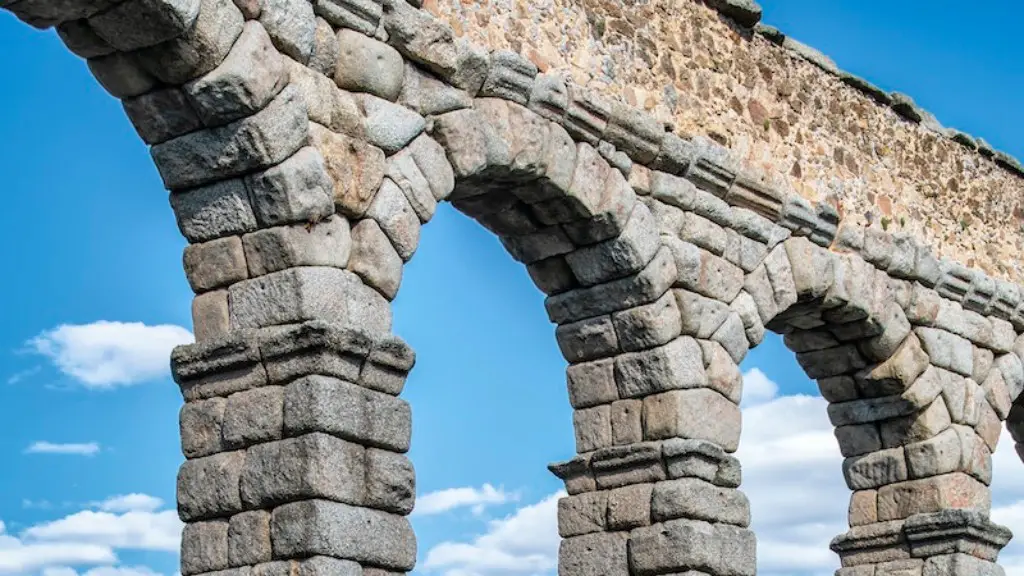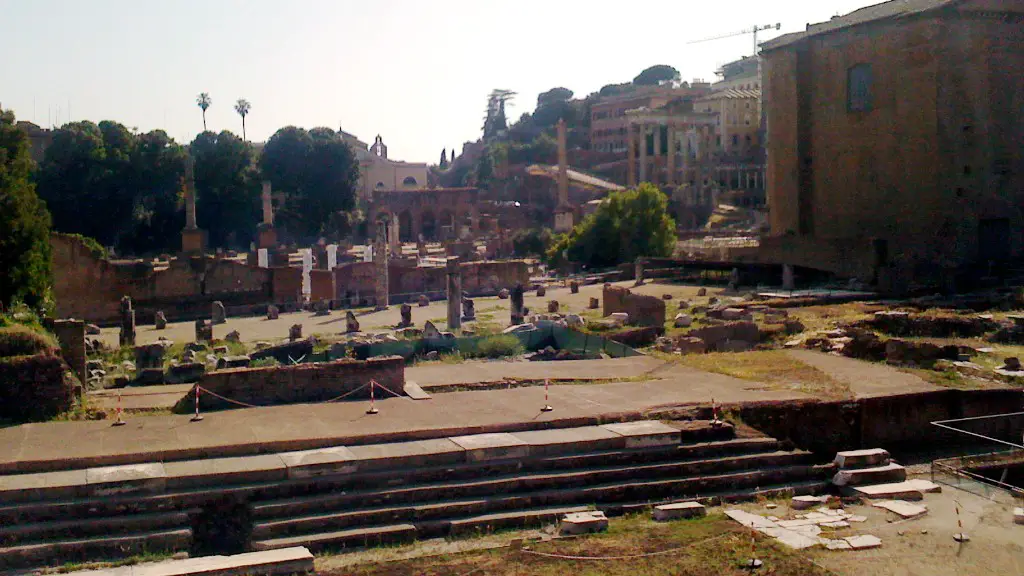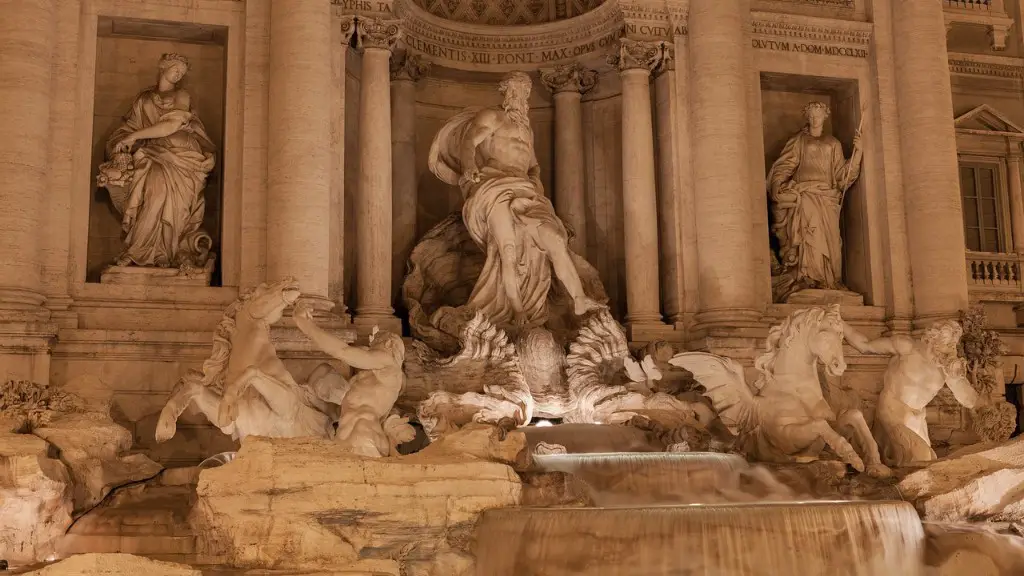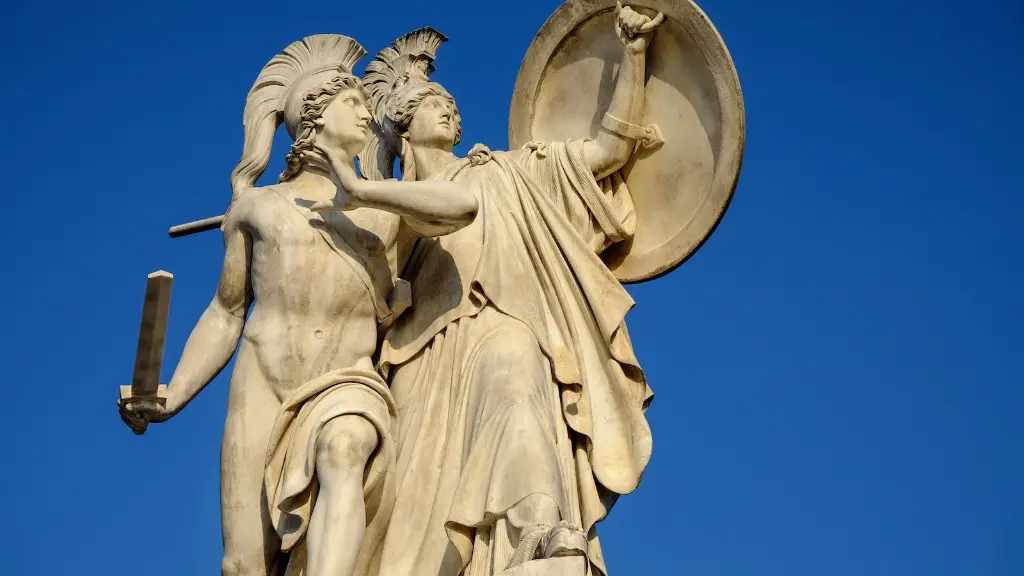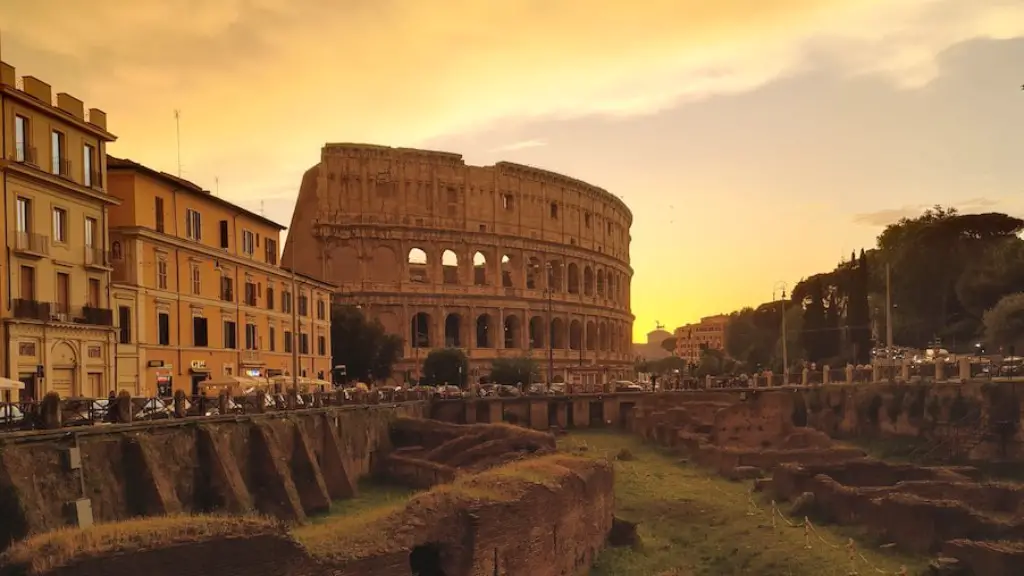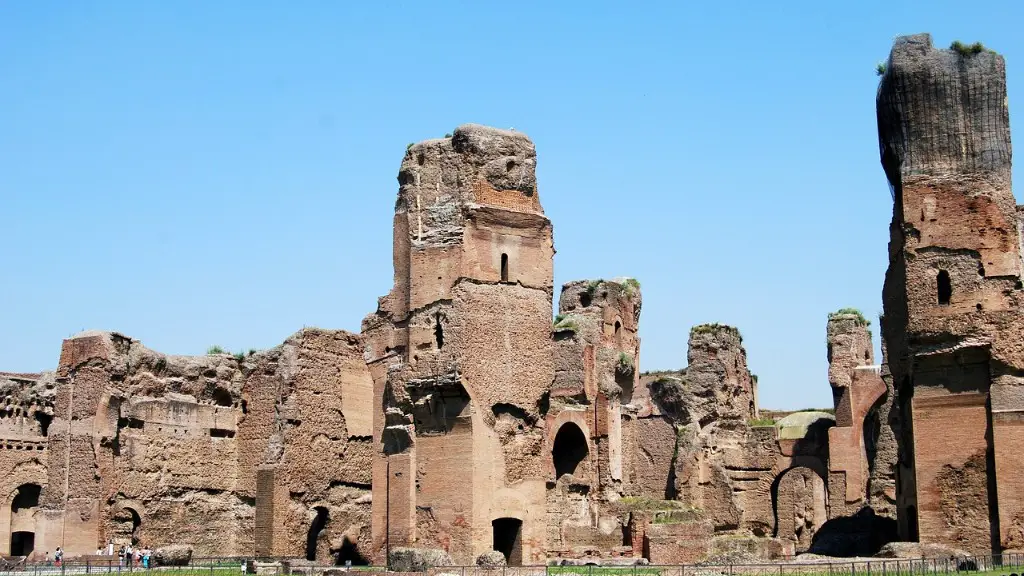Latin Roots
Ancient Rome was a bustling city of culture, trade, and politics. It was populated by people from all over the Mediterranean, but it was also steeped in the Latin language and Roman mythology. Ancient Rome was also an important physical geography location, as it was located near the Mediterranean Sea making it an important trading hub. It had an impressive array of bridges, roads, and walls that were designed to protect the city from invaders and connect it with the rest of the world. Ancient Rome had its own micro-climate, formed by its proximity to the Mediterranean.
The climate was mostly mild and humid, with warm temperatures in the spring and early summer and cooler temperatures in the autumn and winter. Ancient Rome was located near a plateau surrounded by hills and mountains, including the volcanic hills of Latium and the Apennine Mountains to the east. The environment had a powerful influence on the life of the people living in the city and the surrounding area. Ancient Rome was home to vineyards, olive groves, and woodlands, and the banks of the Tiber River were lined with lush vegetation.
The city itself was impressive and had many public buildings, monuments and other architectural gems, such as the Coliseum, the Pantheon and the Forum Romanum. The public buildings and monuments were designed to symbolize Rome’s power and magnificence and remain some of its most iconic images. Additionally, Roman engineers were innovators in water supply, sanitation and public health. Ancient Rome had an impressive aqueduct system, as well as public baths, sewers and a sanitation service to ensure the health of its inhabitants.
The ancient Romans were also renowned for their engineering skills, and the city was surrounded by walls to protect it from foreign invasions. The walls were linked to a series of gates, known as the Servian Wall. The Romans also constructed roads, bridges, and tunnels to facilitate trade and transport. The roads were especially important as they enabled the Romans to move their armies quickly and efficiently to defend the city and expand their empire.
Ancient Rome was a great trading hub and its maritime trade was important for its survival. Its trade routes connected it to other Mediterranean cities and beyond, making it an influential economic power. The Romans built large ships, known as galleys, to facilitate their ocean trade.
Ancient Rome was an impressive city, both in terms of its physical geography and its engineering and architectural accomplishments. Its location by the Mediterranean, its walls, bridges, and roads, as well as its aqueducts, were all elements that helped to make it a powerful center of the ancient world.
Agriculture and Natural Resources
The Roman Empire was founded on the land, and the people of Rome were heavily reliant on agriculture and natural resources for their survival. They used the Latium plains and the surrounding hills for farming and animal husbandry. Ancient Rome was rich in fish, olive oil, and wine, and these products were essential for its citizens. Additionally, Rome was one of the primary sources of salt in the Mediterranean and had an impressive trading network.
The Roman Empire was also known for its vast network of roads and bridgeways that connected the different parts of their empire. Rome was located in a strategic position and could be connected easily to the rest of the empire. As such, it was the hub of the empire and its population was made up of many different people. Its location and its quick access to the sea made it an important trading hub.
The Romans were also great engineers when it came to hydraulic works and their engineering prowess is something that still stands today. They created a sophisticated system of canals, aqueducts, and bridges that enabled them to manage their water supply efficiently and ensure clean water for the entire city. Additionally, the Romans had advanced irrigation methods that were used to farm the Latium plains, providing a steady and consistent supply of food.
Rome was also known for its innovative strategy in utilizing natural resources. The Romans were experts in utilizing different types of rocks for building their roads, their aqueducts, their bridges, and their walls. They also mined for lead, iron, and silver and used them for various purposes.
The Romans also made use of the Mediterranean Sea in various ways. Fishing was an important source of food and profits, while trade and military objectives were also served by being close to the sea. Ancient Rome was also known for its sophisticated maritime trade network, which enabled it to trade across the Mediterranean.
Urban Development
Ancient Rome was one of the first cities to experience such large-scale urban development. The city\’s development was a testament to the Roman people\’s ambition and engineering prowess. Over the years, the city underwent several phases of growth and development, starting with the building of the Servian Wall and the Forum Romanum, the expansion of the city, and finally the grandiose public works and monuments that made Ancient Rome one of the most impressive cities of the ancient world.
The Romans were among the first cultures to create detailed plans for their cities. They had a sophisticated zoning system in place, which put emphasis on the public spaces, such as forums, temples, and plazas. Additionally, the Roman streets were laid out in a grid pattern, making the city an efficient and orderly place. This urban plan facilitated trade and the movement of people and goods.
The Romans were also known for their use of public works and monuments. They were built to show off the city’s wealth, power, and ambition, as well as its engineering skills. The Romans built a wide array of impressive public works, such as aqueducts, roads, bridges, and monuments. The most famous of these monument is perhaps the Coliseum, which was an imposing monument that could seat up to 50,000 people.
The Romans were also innovative when it came to public health. They created an impressive array of public baths, sewers, and sanitation services to make sure their citizens stayed healthy and the city was kept clean. Additionally, the Romans created a sophisticated water supply system, connecting the city to its surrounding areas through an impressive array of aqueducts.
In terms of law and order, the Romans had one of the most progressive and organized systems in place. The law was strictly enforced, and the city had professional police and courts that judged crimes and disputes. This system ensured the city was kept safe and secure, making it one of the most secure cities of its time.
Religion and Mythology
Ancient Rome was a powerful and influential civilization, and its influence can still be seen today. One of the key aspects of its culture was its religion and mythology, which played a vital role in its development. Ancient Rome was home to vast and complex pantheon of gods and goddesses, which symbolized different aspects of Roman life. Religion also formed the basis of their legal system, with most laws based on ancient customs and beliefs.
The Romans believed that the gods and goddesses had a considerable influence in their lives and they held a variety of festivals and ceremonies in order to appease them. The most important of these festivals were the Vestalia, in honour of Vesta, the goddess of the hearth; and the Lupercalia, a fertility festival dedicated to Faunus, the god of fertility and agriculture.
Though Rome was officially a monotheistic religion, the people still retained some of the beliefs of their ancestors and worshipped the pantheon of gods and goddesses along with their own deity. Religion was a part of the lives of all people and it played an important role in culture and society. Additionally, the gods and goddesses were seen as the protectors of the state and their positive influence was believed to protect the city from any potential dangers.
Mythology, too, had a profound influence on the Roman people, with stories of gods and goddesses, heroes and villains, and epic adventures. These stories were told to teach lessons and inspire people to be better citizens, thus forming a sense of Roman identity. Ancient Rome was clearly a civilization heavily influenced by religion and mythology, and this had a profound influence on its citizens.
Legacy and Influence
Ancient Rome had a profound and lasting impact on the world today. Its engineering feats, its government institutions, and its legal system are now the foundations of modern society. Its people left behind breathtaking monuments, its mythology lives on, and its literature and art are still studied today.
The legacy of Ancient Rome is evident in much of the language we use today, many of which were derived from Latin, the language of the Romans. Additionally, its engineering feats, such as its aqueducts and its roads, continue to be a source of inspiration for architects and civil engineers today. Moreover, many of its government institutions, such as the Senate and provincial government, served as the basis for later governments, including the United States.
In terms of literature and art, Ancient Rome was one of the most influential civilizations of the ancient world. Its literature, such as the works of Virgil, Cicero and Horace, were read and studied by many later generations. As for art, the wall paintings and sculptures that remain of Ancient Rome provide us with an insight into its culture and civilization.
The legacy of Ancient Rome lives on today and its influence can be seen in nearly every aspect of modern life. From its engineering feats to its government institutions, the influence of Ancient Rome is evident everywhere. It is a powerful reminder to all of us that it is possible to create a lasting legacy and make a lasting impact on the world.
